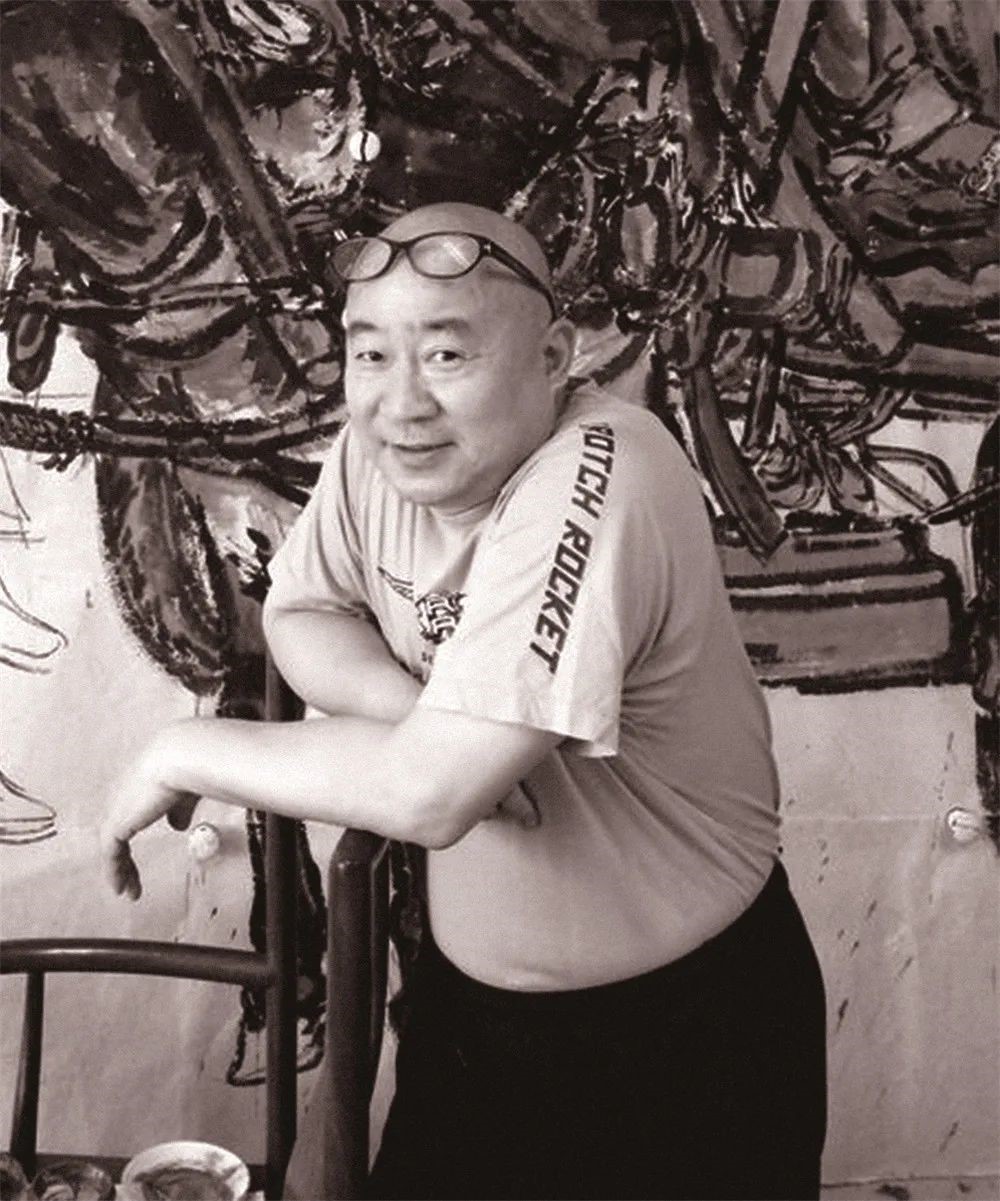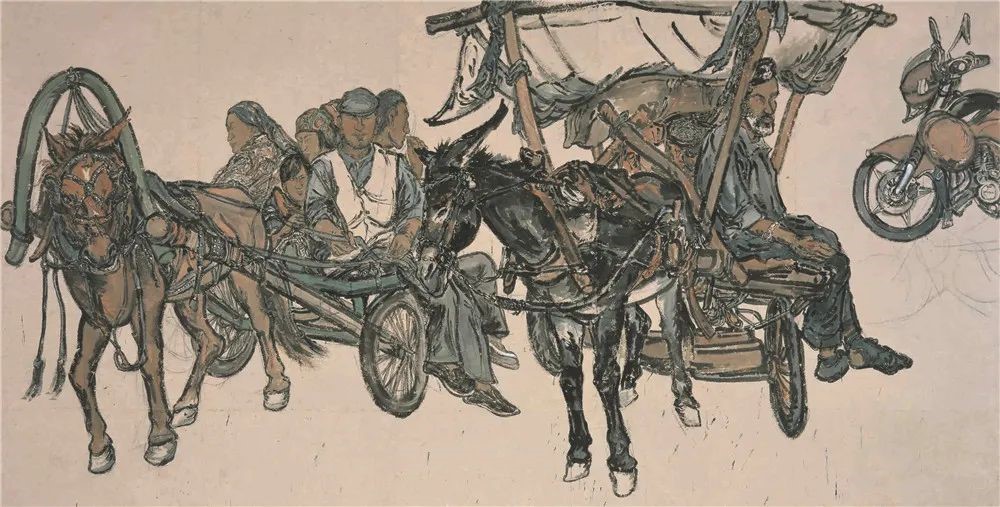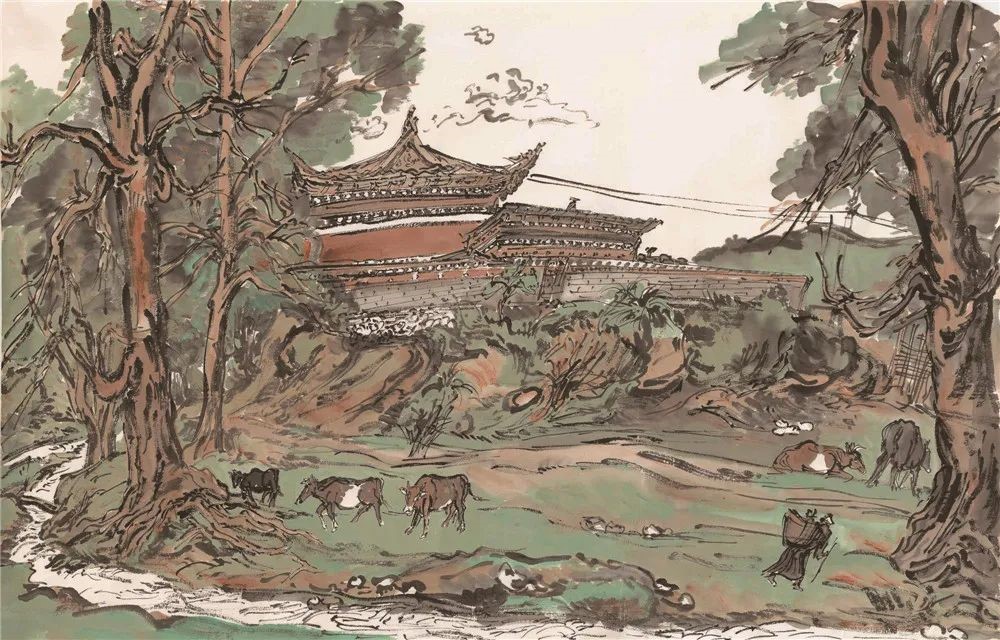Master Lecture Room | Fan Yang: A Random Talk on Chinese Painting

Fan Yang, born in Hong Kong in January 1955, has his family originated in Nantong, Jiangsu Province. In 1972, he joined Nantong Arts and Crafts Research Institute. He graduated from the Fine Arts Department of Nanjing Normal University in 1982. Currently, he is an artist of China National Academy of Painting, a doctoral supervisor of China Academy of Art, a doctoral supervisor of the School of Humanities and Arts of Macau University of Science and Technology, and a distinguished dean of the School of Fine Arts and Design of China ASEAN Art College of Chengdu University. He is one of excellent experts from the Ministry of Culture and Tourism and receives special allowances from the State Council.
Cart drivers along the Silk Road is a work themed of the Belt and Road Initiative depicting drivers. The drivers, horses and donkeys in the picture are almost life-size. When people see the horse painting, they will think of Xu Beihong. When they see the donkey painting, they will think of Huang Zhou. Huang Zhou's donkey was dynamic, while Xu Beihong's horse was vigorous. So how do we draw it? Let's try to draw it a little thicker. Learn the Tang mural draft and Dunhuang mural techniques by sketching the contours with ochre line, and then drawing the ink line, coloring, and finishing. The line is round and thick, similar to that painting Yongle Palace, rather than just using sketches or sketch-style depiction. Perhaps this is more Chinese style.
Compared to making a copy of the original drawing after the drawing is finished, I prefer to take a small piece of drawing paper, circle and dot it with pencil or light ink, and create the atmosphere of the whole painting first by feeling and intuition, because drawing on the small paper is easier to control and the feeling is found more naturally and accurately. Huang Yongyu said in his class to paint first on a small draft, with the draft paper sometimes only two or three matchboxes as big, to sketch with pencil or ink, and then look at the whole to find the composition line.

Regarding the composition line, the French painter David once painted "Oath of the Horatii", in which three people, each holding a sword, form a stable triangle, and the picture presents a straight line composition. In a picture of swimming fish of the Chinese Song Dynasty, the composition of the swimming fish and algae is curved. Sometimes “the true face of Lushan is lost to my sight, for it is right in this mountain that I reside”. When a foreigner looks at it from the outside, he can see it clearly. Thinking along these lines, it is true that foreigners use more straight lines, which are more masculine and robust. Chinese paintings use more curves, which are feminine and elegant. The same seems to be true for music. Foreigners play trumpets, drums and symphonies, while we have guqin and kunqu. Bel canto is loud, inspiring and motivating while Chinese opera is mild, pleasant to the temperament, and pleasing to the eye. The difference between the two is huge.
Wang Bomin has written an article dedicated to analyzing a passage of remarks on the taiji diagram in Huang Binhong's manuscript, which is very short but very interesting. When we gradually have experience, our own views and ideas, and our own painting methods, we will find that it does make sense. That paragraph roughly says that there is white in black and black in white, and the cycle goes on and on. Without a beginning, there is actually no end. This really illustrates the Chinese mindset, their way of thinking and course of action, and their view of the world and nature. The world is connected, cyclical and even infinite.
When it comes to brush and ink, Zhang Ding said brush and ink is the foundation of Chinese painting. But do people really understand the essence of Chinese painting? That's hard to say. The brush and ink of Chinese painting actually contains all the cultivation and training of the painter, covering the whole process from copying, sketching, creation to the formation of personal style. The brush and ink is a depiction of one's personality and a reflection of one's comprehensive cultivation. It does not simply refer to the use of brush and ink, nor does it simply refer to the use of ink, paper, inkstone and other materials.
The spirit of Chinese painting has a long history, and the saying of brush and ink has a profound meaning, which deserves our serious consideration.

Related articles
-
 Treasures of Tibetan History and Culture
Treasures of Tibetan History and CultureMore
-
 Picture portraits in rural settings
Picture portraits in rural settingsMore
-
 Chinese zodiac exhibition opens in Panama
Chinese zodiac exhibition opens in PanamaMore
-
 Beijing exhibition presents vitality of spring
Beijing exhibition presents vitality of springMore
-
 The inaugural edition of Guangzhou Design Triennial kicks off with Wang Naiyi as co-curator
The inaugural edition of Guangzhou Design Triennial kicks off with Wang Naiyi as co-curatorMore
-
 Ink splashed with wit of the brush
Ink splashed with wit of the brushMore
